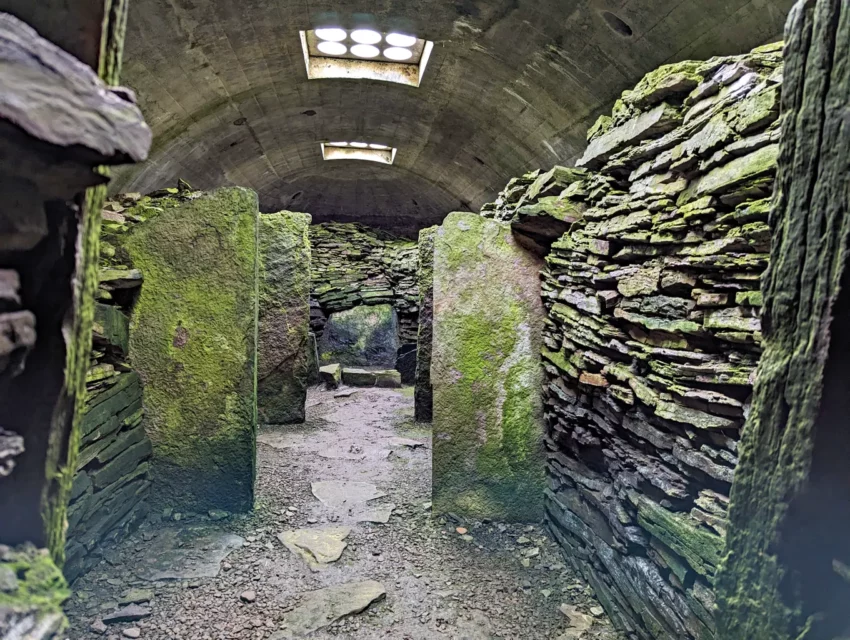The Knowe of Yarso: A Journey into Neolithic Orkney
The Knowe of Yarso is a remarkable Neolithic burial monument on the island of Rousay in Orkney, Scotland. Dating back to between 3500 and 2500 BC, this site offers a fascinating glimpse into the ancient past. The site was excavated in the 1930s, revealing a treasure trove of human and animal remains, pottery, and tools. In 1994, Historic Environment Scotland designated the Knowe of Yarso as a protected site, ensuring its preservation for future generations.
Get your dose of History via Email
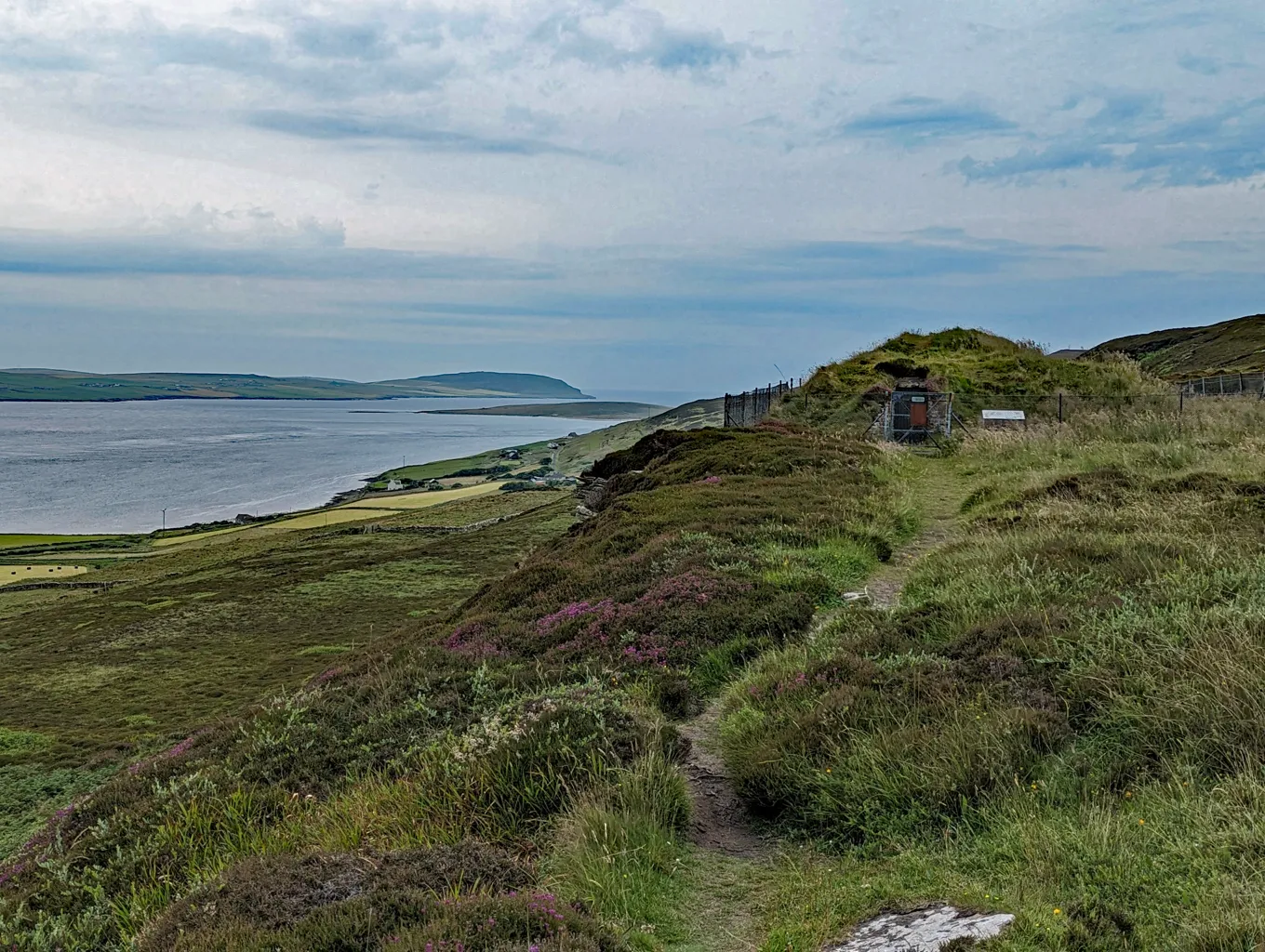
A Monument Overlooking Eynhallow Sound
Perched on a ledge near the top of a steep hill, the Knowe of Yarso overlooks the scenic Eynhallow Sound. Nearby, at the base of the hill, lie the remains of the Blackhammer chambered cairn. Knowe of Yarso itself appears as a large, grass-covered mound with a concrete roof. It belongs to the Orkney–Cromarty type of stalled chambered cairns, similar to other notable sites on Rousay, such as Midhowe and Blackhammer.
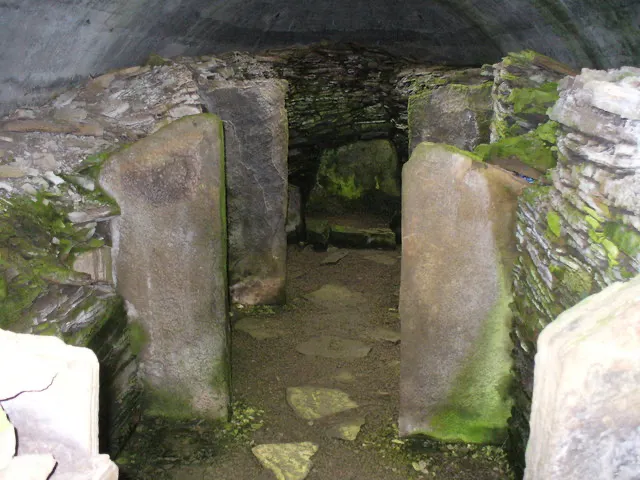
Architectural and Archaeological Features
The tomb, rectangular in shape, measures 15 meters by 8 meters and is oriented northwest-southeast. The cairn encloses a burial monument measuring 8 meters by 2 meters, with a surviving height of 2 meters. Though the roof was removed long ago, the tomb’s exterior walls still display decorative stonework near the entrance. The original burial chamber featured four compartments separated by pairs of upright slabs. A 4-meter passage on the southeast provides access to the main chamber.
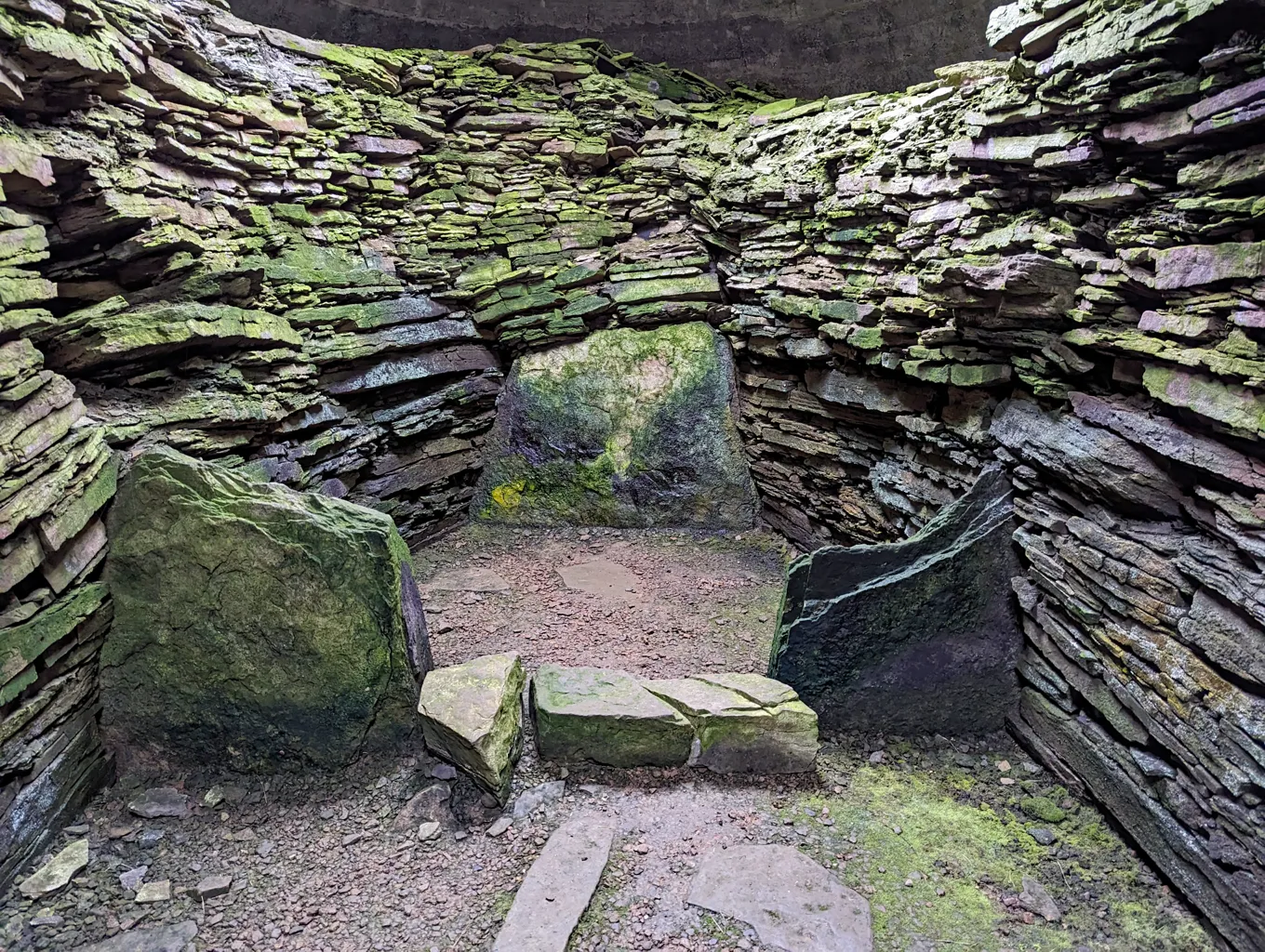
Excavation Discoveries
The 1930s excavation uncovered skeletal remains of at least 29 individuals, 36 deer, several sheep, and a dog. Alongside these, pottery sherds, flint pieces, four arrowheads, and five bone tools were found. The arrangement of the 17 skulls, placed side-by-side, suggests that Neolithic people believed in releasing the spirit only after the body decayed. This practice created space for new burials by rearranging bones.
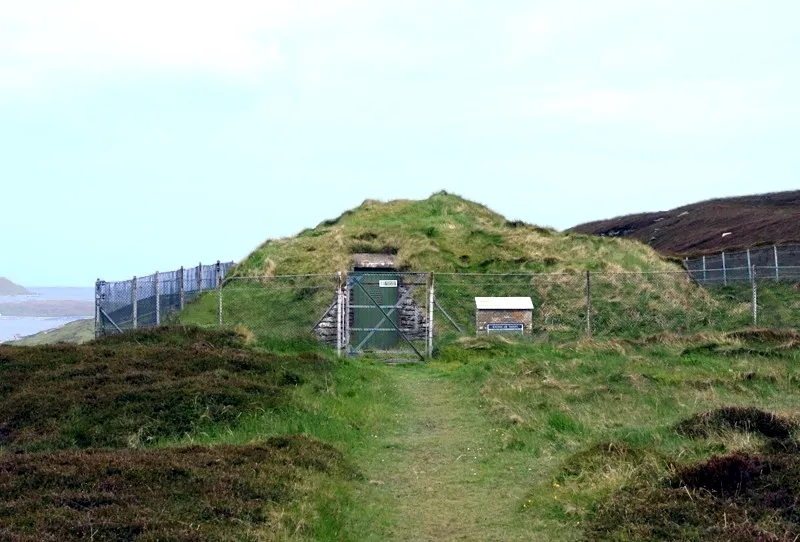
The Cultural and Historical Significance
Knowe of Yarso is one of at least 15 chambered tombs on Rousay, indicating a rich communal burial tradition. These tombs likely reflect the landholding patterns of small farming communities. The presence of deer bones parallels other sites in Orkney, such as the dog skulls at Cuween Hill and sea eagle bones at Isbister. These animal remains may represent tribal emblems, adding another layer of cultural significance to the site.
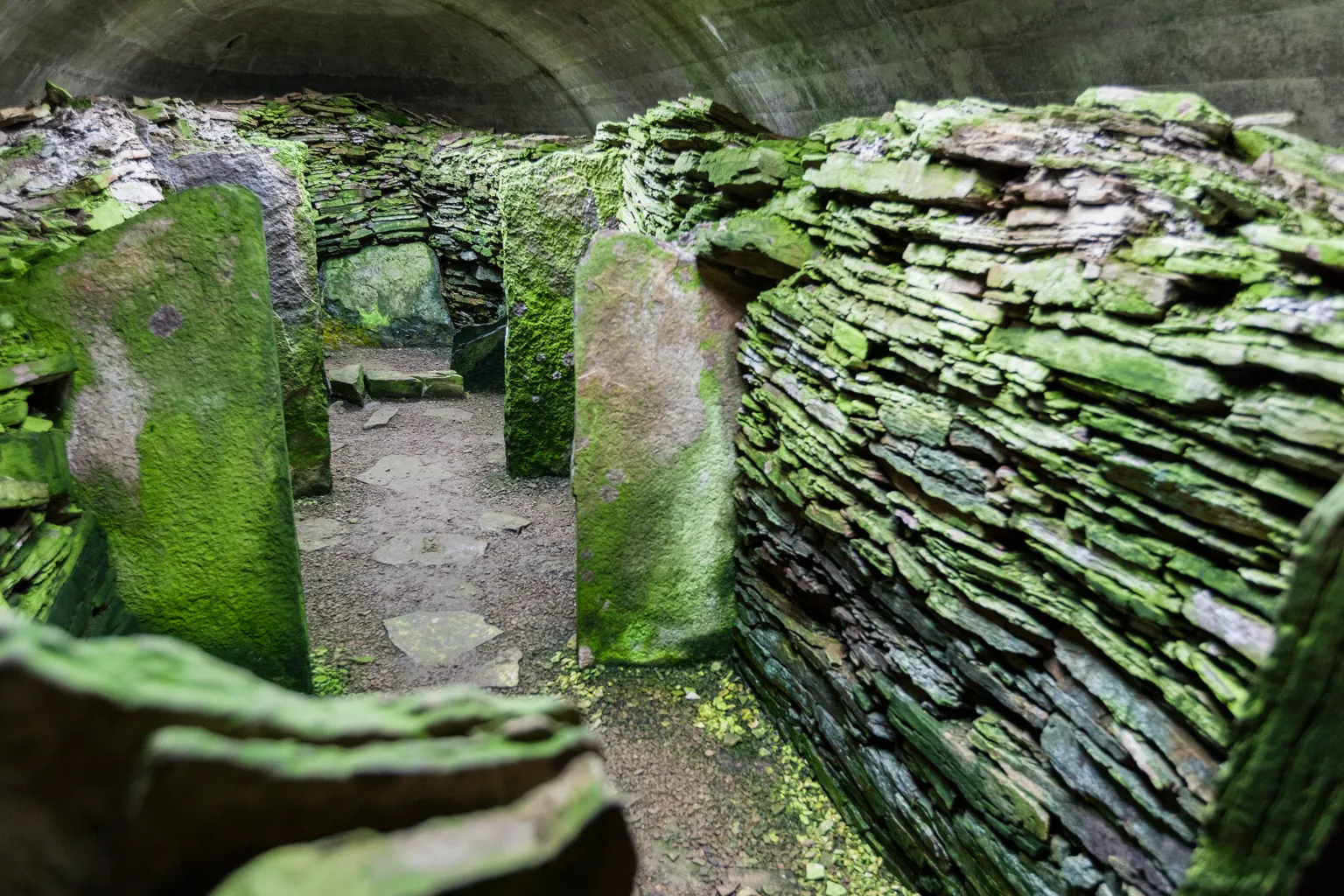
A Trail Through Prehistory
Knowe of Yarso forms part of a fascinating trail through prehistory on Rousay, along with Blackhammer, Taversöe Tuick, and the magnificent stalled cairn at Midhowe. These sites collectively offer a comprehensive view of the island’s ancient history.
Continuing Legacy
Pottery found inside Knowe of Yarso suggests the tomb remained in use until the late 2000s BC. Despite its roof being robbed in antiquity, the tomb’s walls still stand near their original height. Visitors can still enter the chamber through the original passage, experiencing a direct connection to the ancient world.
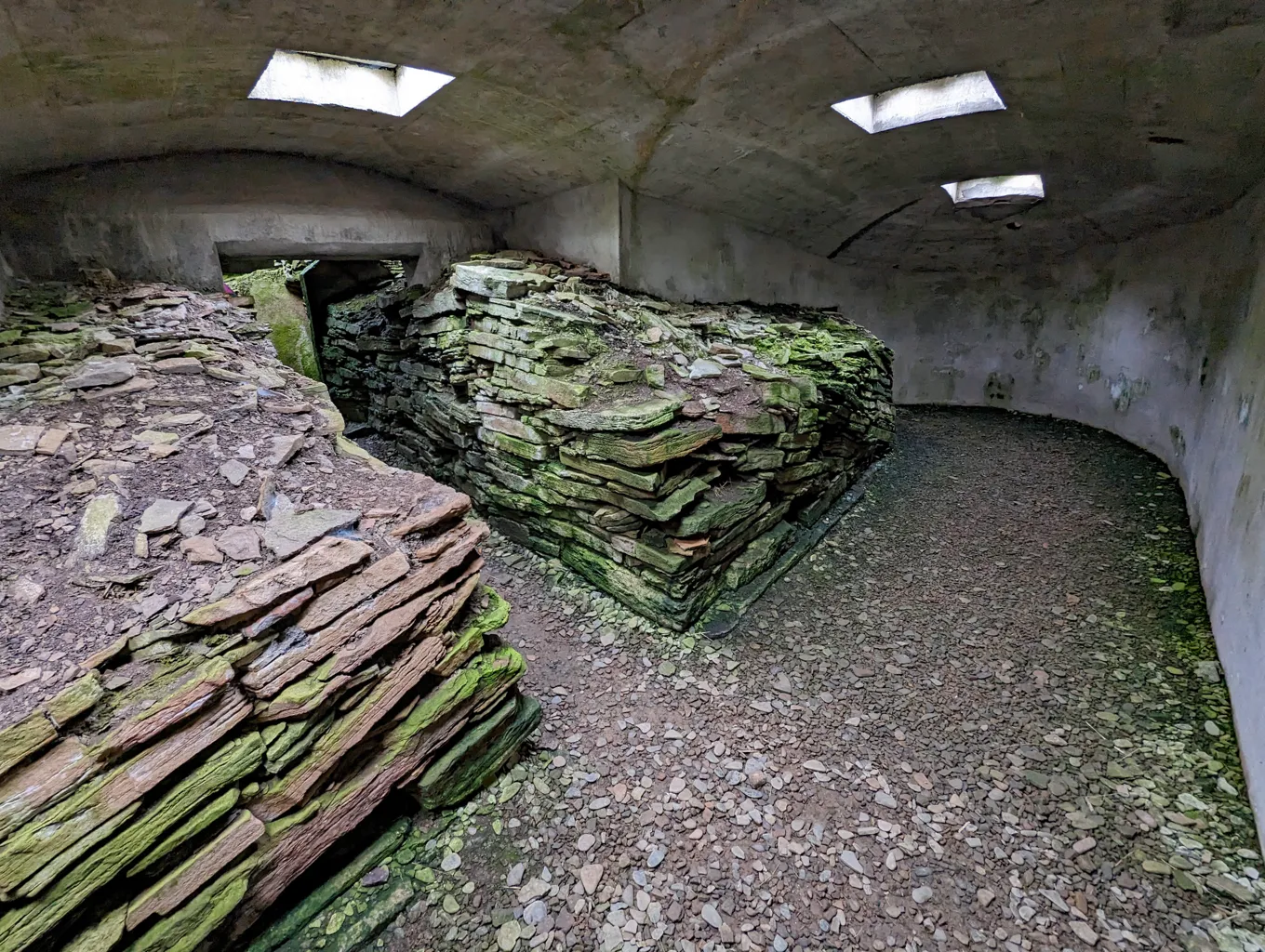
Conclusion
The Knowe of Yarso is more than just a burial site; it is a window into the beliefs and practices of Neolithic communities in Orkney. Its preservation and the ongoing exploration of its secrets ensure that this remarkable site continues to illuminate the ancient past for generations to come. As part of Orkney’s rich historical landscape, Knowe of Yarso remains a testament to the ingenuity and cultural depth of its early inhabitants.
Sources:
Historic Environment Scotland
Wikipedia


